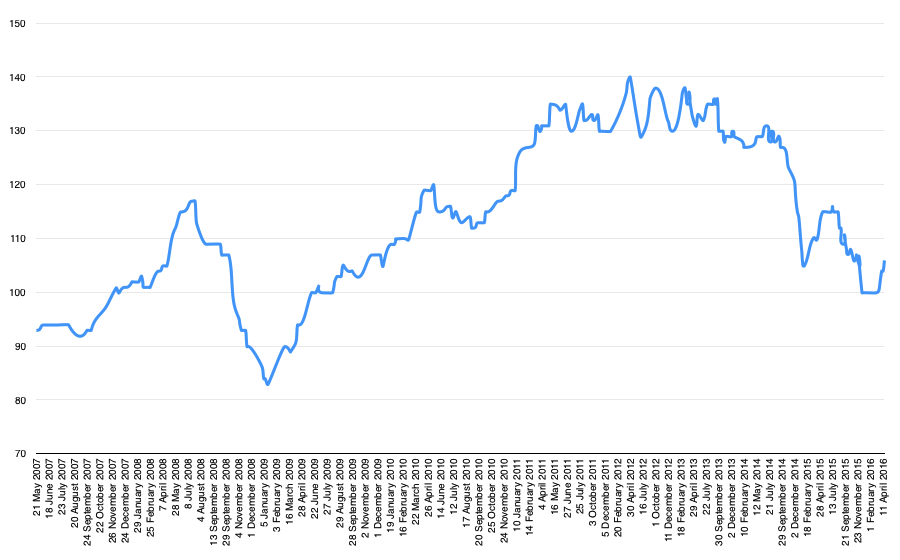Using AppleScript to collect data from your inbox.
There are a host of ways of finding out where the cheapest fuel is for sale near you. I’ve been subscribed to PetrolPrices.com’s notifications for years and years, and occasionally even look at the emails. On one such day, realising I had quite the history of local at-the-pump prices, I wondered if I could easily collate and chart this data1. Being sat at a Mac, I turned to AppleScript.
I’d never written any AppleScript before but I knew it must be fairly straightforward to do what I wanted. The basic script that I eventually cobbled together simply loops through all the emails in a set Apple Mail mailbox, taking the subject line and date stamp of each message, then dumps this info into a CSV file. Here’s the relevent code2…
tell application "Mail"
set theMailbox to mailbox "testing" -- CHANGE THIS VALUE TO ALTER THE TARGET MAILBOX
set messageCount to count of messages in theMailbox -- Find out how many emails there are
end tell
set filePath to (path to desktop as text) & "output.csv" -- SETS OUTPUT LOCATION AND FILE NAME
repeat with counter from 1 to messageCount -- Loop through all the emails
tell application "Mail"
set theMessage to message counter of theMailbox -- Pick the next email
set msgSubject to subject of theMessage -- Gets the email subject
set tempDate to date received of theMessage -- Gets the date and time
set msgDate to date string of tempDate -- Strips the time bit from it
end tell
set theString to "Message " & counter & " of " & messageCount & "," & msgSubject & "," & msgDate & return -- Builds a line of the information we want
set theResult to writeTo(filePath, theString, text, true) -- Save the line to file
if not theResult then display dialog "There was an error writing data!"
end repeatThe output from my script (the CSV file) is rather messy, containing as it does the whole subject lines, but for me this was easier to deal with afterwards than trying to work out how to run pattern-matching in the AppleScript to remove the chaff. I was also extremely fortunate that PetrolPrices included a fuel price in their email subject line, otherwise I would have had to work out that pattern-matching stuff to search the email body text for the price (and probably given up).
Anyway, post-manual-processing of the output file, here’s the historical petrol price graph that I was able to produce with the gathered data…3

For motorists, that line is a bit depressing. For me, it’s pleasingly similar to this one.
-
Strictly speaking, the PetrolPrices.com terms and conditions probably forbid me from doing any of this. Back in the real world, however, I don’t see why the company would have any cause for complaint with the above. If you work at PetrolPrices and disagree, please get in touch. ↩
-
If you want to use it, you might like to fetch the full, plaintext version which will be viewable in-browser but that can also be opened in OS X’s Script Editor. It also shows the important file-writing function. ↩
-
For those wondering why a post published in March 2017 has a graph that only runs to April 2016… Well, that’s because PetrolPrices changed the format of their emails and my previous luck around inclusion of a price in the subject line ran out. Maybe I’ll work out the required regex/sed/grep/etc for version 2 of my script. (Holding your breath would be ill advised.) ↩